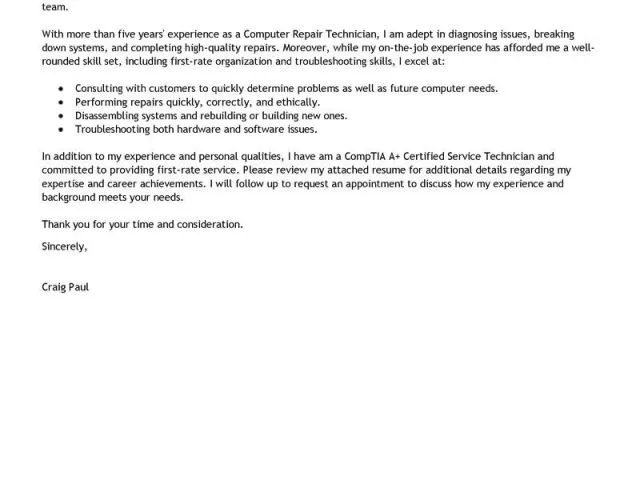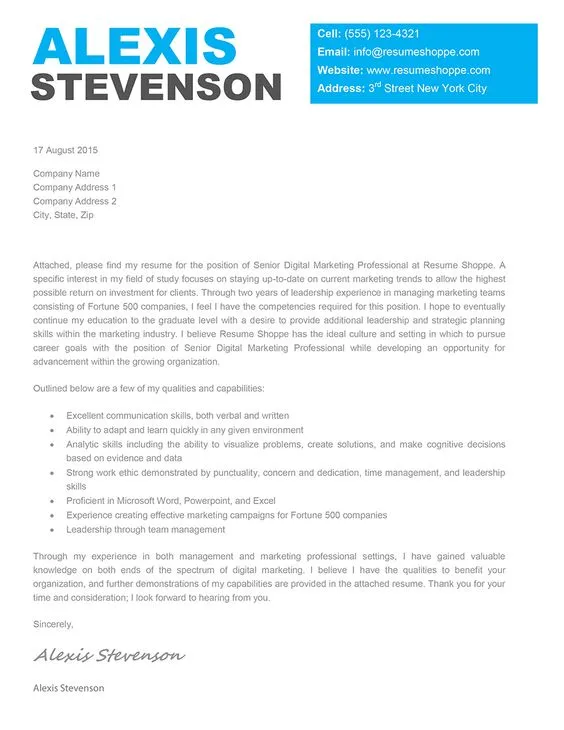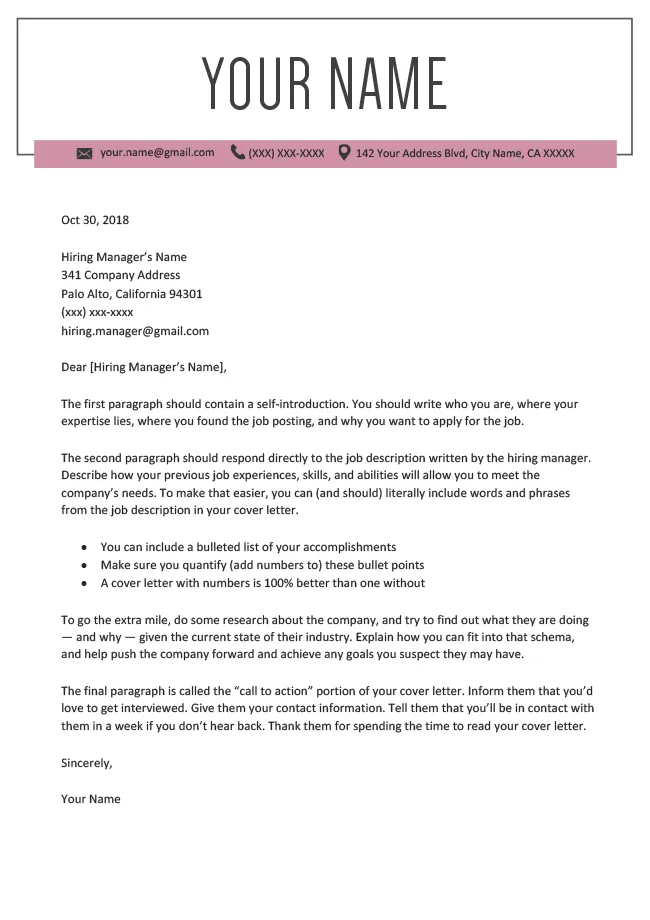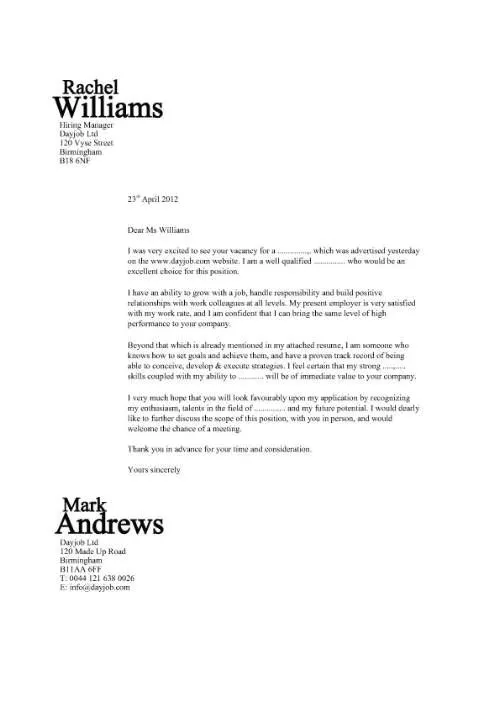Crafting a Standout Cover Letter
In the competitive world of job applications, a cover letter is your first chance to make a lasting impression. It’s not just a formality; it’s a crucial tool that can significantly impact your chances of landing an interview. A well-crafted cover letter goes beyond simply listing your qualifications; it showcases your personality, enthusiasm, and the unique value you bring to a potential employer. This guide provides you with the insights and strategies you need to create a cover letter that truly stands out from the crowd, grabbing the attention of hiring managers and setting you apart from the competition. Let’s transform your job application from a submission to a success story.
Understanding the Purpose of a Cover Letter
Before diving into the ‘how,’ it’s essential to understand the ‘why.’ A cover letter serves as more than just an introduction. It’s your opportunity to provide context to your resume, explaining why you’re the perfect fit for the role and the company. It’s where you can demonstrate your understanding of the company’s needs, highlight your relevant skills and experiences, and showcase your personality. Think of it as a personal sales pitch, specifically tailored to the job and the organization. A strong cover letter isn’t a repetition of your resume; it elaborates on your qualifications, providing specific examples and insights that demonstrate your genuine interest and suitability.
Why a Great Cover Letter Matters

In a world where recruiters often sift through hundreds of applications, a great cover letter is your secret weapon. It can be the deciding factor in whether your application makes it to the interview stage. A well-written cover letter can capture the hiring manager’s attention, demonstrating your communication skills and your ability to articulate your value. Furthermore, it provides an opportunity to address any potential gaps in your resume, explain career changes, or highlight accomplishments that might not be immediately apparent. By making a strong first impression, you increase your chances of being noticed and remembered, setting the stage for a successful interview and, ultimately, your dream job. A cover letter, when done right, transforms your application from a mere document into a compelling narrative.
Key Components of a Powerful Cover Letter
To create a cover letter that commands attention, you need to incorporate several key components. These elements, when combined, showcase your professionalism, your understanding of the role, and your enthusiasm for the opportunity. A well-structured cover letter includes a compelling opening, a body that highlights your relevant skills and experiences, and a strong closing that expresses your interest and encourages further action. The overall goal is to clearly and concisely communicate why you are the ideal candidate, leaving the hiring manager with a positive and memorable impression of you. Remember that personalization is key; a generic template simply won’t do.
Personalizing Your Cover Letter
One of the most critical aspects of a standout cover letter is personalization. Generic, mass-produced letters are easily identified and often disregarded. Instead, tailor your cover letter to each specific job and company. This means researching the company, understanding its values and goals, and demonstrating how your skills and experiences align with their needs. Personalization shows that you’ve taken the time to understand the role and the organization, demonstrating your genuine interest. Use the hiring manager’s name if you know it and reference specific aspects of the job description to show how you meet the requirements. This level of detail will set you apart from those who send out the same letter to every opportunity.
Researching the Company & Role

Thorough research is the foundation of a personalized cover letter. Before you start writing, delve into the company’s website, social media profiles, and recent news articles. Understand their mission, values, and recent projects. Look closely at the job description and identify the key skills and qualifications they are seeking. Use this information to tailor your letter, highlighting how your experiences and skills directly match the company’s needs and the role’s requirements. This research demonstrates initiative and genuine interest, showing the hiring manager that you’re not just applying for any job; you’re specifically interested in this opportunity and this company.
Highlighting Relevant Skills and Experience
Your cover letter is the perfect place to showcase your relevant skills and experiences. But don’t just list them; provide context and demonstrate how you’ve used those skills to achieve results. For each skill or experience you highlight, provide specific examples of your accomplishments and the impact you made. Quantify your achievements whenever possible (e.g., ‘increased sales by 15%’). Tailor the skills you emphasize to match the requirements outlined in the job description. This targeted approach shows the hiring manager that you possess the skills and experience necessary to succeed in the role, and you understand how to apply them to real-world challenges.
Quantifying Your Achievements
Numbers speak louder than words. When describing your achievements, use quantifiable data to illustrate your impact. Instead of saying, ‘Improved customer service,’ say, ‘Improved customer satisfaction scores by 20%.’ Instead of stating, ‘Managed projects successfully,’ state, ‘Managed 5 projects simultaneously, delivering them on time and within budget.’ Quantifying your achievements provides concrete evidence of your capabilities and allows the hiring manager to easily understand the value you bring. This approach adds credibility to your claims and makes your cover letter more compelling. Use metrics and statistics that are relevant to the job and demonstrate your ability to achieve tangible results.
Showcasing Your Personality & Enthusiasm

A cover letter is your opportunity to let your personality shine. While professionalism is essential, don’t be afraid to inject your enthusiasm and unique qualities into your writing. Use a tone that reflects your genuine interest in the role and the company. Share a brief anecdote, if relevant, that illustrates your passion for the industry or the skills required. Your personality helps you connect with the hiring manager on a personal level, making you more memorable. Demonstrate your enthusiasm by expressing your excitement about the opportunity and highlighting why you are particularly drawn to this specific role and company. Let your personality make you stand out.
Formatting & Style for Impact
The formatting and style of your cover letter play a crucial role in making a positive impression. A well-formatted letter is easy to read, professional-looking, and reflects attention to detail. Choose a clear, professional font, such as Arial or Times New Roman, and use a standard font size (11 or 12 points). Maintain consistent formatting throughout the letter, including consistent margins, spacing, and bullet points. Use concise, direct language, avoiding jargon and overly complex sentences. The goal is to create a document that is visually appealing and easy for the hiring manager to quickly scan and understand. Proper formatting shows that you value clarity and attention to detail, which are essential qualities in any role.
Choosing the Right Tone
The tone of your cover letter should be professional yet engaging. Aim for a balance between formal and conversational, reflecting your personality while maintaining respect for the reader. Avoid overly casual language, slang, or overly familiar greetings. Your tone should match the company culture and the role you’re applying for. Read the job description and research the company to get a sense of their style and values. This will help you tailor your tone accordingly. The goal is to sound confident, enthusiastic, and sincere, making the hiring manager want to learn more about you. The right tone demonstrates that you are a good fit for the company culture.
Formatting Basics

Effective formatting is crucial for readability. Use clear headings and subheadings to break up the text and guide the reader. Keep paragraphs concise, typically no more than five or six sentences each. Use bullet points to highlight key accomplishments or skills. Ensure your letter has proper margins (1 inch is standard) and consistent spacing. Proofread the document carefully for any formatting errors. Save your cover letter as a PDF to preserve the formatting. A well-formatted cover letter is easier to read and demonstrates your attention to detail, making it more likely that your application will stand out.
Proofreading & Editing
Proofreading and editing are essential steps in creating a standout cover letter. Typos, grammatical errors, and spelling mistakes can undermine your credibility and make you appear unprofessional. Always proofread your cover letter multiple times, checking for any errors. Use spell-check and grammar-check tools, but don’t rely solely on them. Ask a friend or family member to review your letter for a fresh perspective. Ensure your writing is clear, concise, and free of any errors that could detract from your message. Proofreading shows attention to detail and a commitment to quality, both important qualities in any profession.
Common Cover Letter Mistakes to Avoid
Even the most talented candidates can sabotage their chances with a poorly written cover letter. Recognizing and avoiding common mistakes can significantly improve your application’s impact. These mistakes can range from using generic templates to focusing too much on yourself and ignoring the specific requirements of the job description. By avoiding these pitfalls, you can create a cover letter that showcases your strengths and grabs the attention of the hiring manager. It’s important to be self-aware of these traps and proactively avoid them to make a lasting positive impression.
Generic Cover Letters

Generic cover letters are the most common mistake and the easiest to avoid. Sending the same cover letter to multiple companies demonstrates a lack of interest and effort. It also shows that you haven’t taken the time to understand the specific needs of the role and the company. Instead of using a generic template, personalize each cover letter for the specific job and company. Research the company, tailor your skills and experiences to the job requirements, and highlight why you are particularly interested in the opportunity. This level of detail will demonstrate your genuine interest and commitment, making your application more likely to succeed.
Focusing Too Much on Yourself
While a cover letter should highlight your skills and experiences, avoid focusing solely on your needs and wants. Instead, frame your letter around how you can benefit the company and the role. Highlight your ability to solve problems, contribute to team goals, and deliver value. Shift the focus from what you want to what you can offer. Demonstrate how your skills and experiences align with the company’s needs and goals. By emphasizing the value you bring, you will make a more compelling case for why you should be hired and make your cover letter stand out.
Ignoring the Job Description
The job description is your roadmap to a successful application. Ignoring the requirements and keywords in the job description is a major mistake. Carefully review the description and highlight the skills and experiences that the company is looking for. Tailor your cover letter to demonstrate how you meet those requirements, providing specific examples and quantifiable results. Use the same language and keywords that the company uses in its description. This targeted approach shows that you have read the job description, understand the role, and possess the skills and qualifications they seek. By aligning your letter with the job description, you increase your chances of making a positive impression.
Writing a Compelling Call to Action

A compelling call to action is the final touch that elevates your cover letter. End your letter by expressing your enthusiasm for the opportunity and clearly stating what you want the hiring manager to do next. You might request an interview, suggest a specific time to connect, or simply express your eagerness to discuss the role further. Make it easy for the hiring manager to take the next step. Close with a professional closing and your contact information. A strong call to action leaves a lasting impression and encourages the hiring manager to take the initiative, increasing your chances of getting an interview and landing the job.
